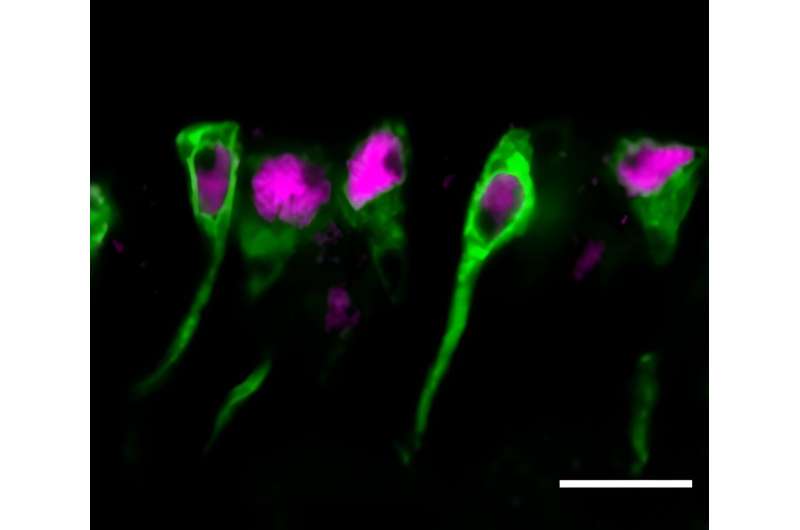This article has been reviewed according to Science X's editorial process and policies. Editors have highlighted the following attributes while ensuring the content's credibility:
fact-checked
peer-reviewed publication
trusted source
proofread
Tapping into regeneration: New paths to repairing brain injury discovered in fruit flies

Researchers at Duke-NUS Medical School have discovered the regenerative capabilities of injured cellular protrusions from dormant neural stem cells (NSCs) in fruit flies. Published in Developmental Cell, the findings establish fruit fly NSCs as a powerful new model to unlock the secrets of neuronal regeneration that could one day lead to new therapies for repairing damage in aging human brains.
The study is the first to demonstrate that severed protrusions from fruit fly NSCs can regenerate. However, this capacity declines with age, mirroring the limited ability of mammalian neurons to regrow damaged connections as they grow older.
The researchers discovered that the golgi apparatus—an organelle that processes proteins and sends them to their destinations—is important for this regeneration capability in its role as the microtubule organizing center of dormant NSCs. Microtubules provide structure to cells, transport substances within cells, enable cell division and growth and allow neuron signaling in fruit flies.
The scientists also identified two golgi proteins, Arf1 and Sec71, as important for reactivation as they associate with the microtubule-binding protein Msps/XMAP215 to kickstart the growth of microtubules in NSCs, thus activating the dormant stem cells.
A related study by the same research team, published in EMBO reports, also revealed the critical role of the microtubule-binding protein Patronin, in conjunction with Arf1 and Sec71, in reawakening dormant fruit fly NSCs.
"Taken together, our findings suggest a novel pathway involving golgi proteins Arf1 and Sec71 and the microtubule regulators Patronin/CAMSAP and Msps that can switch quiescent NSCs into active proliferative states," said first author Dr. Mahekta Gujar, Research Fellow with Duke-NUS' Neuroscience & Behavioral Disorders (NBD) Program. "This sheds light on how dormant stem cells in the brain can be reactivated and may lead to new ways to stimulate NSC activation to treat injuries or neurodegenerative diseases."
The golgi apparatus was found to be pivotal for regeneration, directing the regrowth of damaged NSC protrusions. Arf1, Sec71, Msps and Patronin enabled this repair process, while an elevated level of Arf1 was able to enhance the regeneration.
"The parallels between fruit fly NSC regeneration and the regrowth of damaged neurons in mammals are striking," said senior author Professor Wang Hongyan, Deputy Program Director of the NBD Program. "By establishing fruit fly NSCs as a new model for studying regeneration, we can now conduct genetic screens to systematically identify factors that can overcome age-related barriers to regrowth after injury. This breakthrough may unlock new therapeutic strategies to stimulate neuronal regeneration in aging human brains."
"These studies significantly advance our fundamental understanding of the basic biology of neural stem cells and neuronal repair," added Professor Patrick Tan, Senior Vice-Dean for Research at Duke-NUS. "Leveraging the power of fruit fly genetics, Professor Wang and her team have uncovered new molecular players that may be translated in future to develop innovative treatments for neurodegenerative diseases and spinal cord injuries."
More information: 1. Mahekta R. Gujar, Yang Gao, Xiang Teng, Qiannan Deng, Kun-Yang Lin, Ye Sing Tan, Yusuke Toyama, and Hongyan Wang. Golgi-dependent Reactivation and Regeneration of Quiescent Neural Stem Cells. Developmental Cell (2023). www.biorxiv.org/content/10.110 … /2022.08.22.504877v1
2.Mahekta R Gujar et al, Patronin/CAMSAP promotes reactivation and regeneration of Drosophila quiescent neural stem cells, EMBO reports (2023). DOI: 10.15252/embr.202256624




















